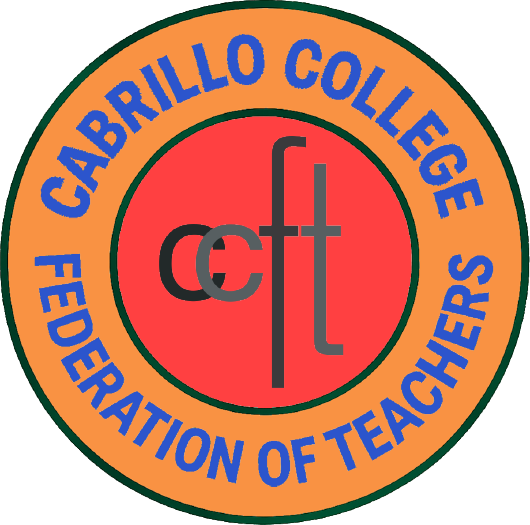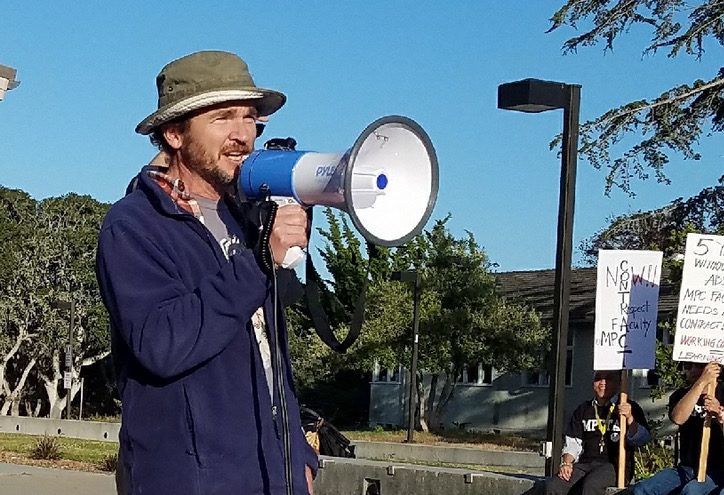And just like that, we find ourselves cruising past the middle of semester…
One way to understand the contract is as the set of rules that dictate how faculty agree to work with the district to facilitate the college’s broader goals. The word I want you to focus on right now is “how”. It is one piece of a bigger puzzle including the “what” and the “why”. As in, “What are we trying to achieve?”, and “Why are we trying to achieve that?”. More often than not, the contract just articulates the “how” questions of implementation, but the what and why discussion is often stored somewhere else. Sometimes in minutes, personal notes, or just in the heads of those who argued for it.
One can read the contract with the eye of a detective… Why would they have done that? What is that trying to achieve? Hmmm… Then the light goes on and you see what it can do! (I’ve written in the past about load factors and how they can be seen as a tool to change the balance of time spent in lecture, office hours, and prep/grading.)
We currently have a reopener on section 9.3 for our article on professional development. This particular section covers how funds will be distributed to faculty to cover all or some of the expenses related to professional development. At first you might think the “what” and “why” questions around this language are straightforward, but as you start to think about how you might modify this section, these questions become a little more interesting. What is this program intending to do? Is it working? How often are adjuncts able to take advantage of these funds? Would another model have a wider effect?
Once you start down this path, you start looking at other sections of the contract that relate to a broad definition of professional development. Article 9 also defines our sabbatical program, our FLEX program, and the concept of unit banking. Reaching out a little further, you quickly realize that the salary schedule itself provides strong incentives for professional development. While class (column) advancement is typically achieved through graduate and upper division coursework in your discipline (section 13.4) the contract also provides avenues for advancement for lower-division work (section 13.5.1.1) or for professional development activities that aren’t associated with college coursework (section 13.5.2). In both cases, one must apply for credit, but one could imagine developing “packages” of opportunities to help faculty move across the salary schedule while helping to develop new skills. What might go in an “equity in the classroom” package? Or a “creating an inclusive classroom” package? Or a “building a STEAM infused classroom” package.
Taken as a whole, the contract provides some interesting tools to incentivize professional development. That said, perhaps we are not using them to their full potential and who gets lost in the cracks? Adjuncts may not have many financial resources available for their professional development, but maybe they would be comfortable paying their way if they knew it would help them across the schedule. How do we incentivize faculty already in column 6? How might these tools encourage the change we envision with Guided Pathways? Is there a win/win that will lead to enrollment growth? These are the kinds of things we are thinking about when we negotiate.
We don’t claim to have all the answers. Nor do we claim to have all the good ideas. And we are not isolating ourselves to “how” questions despite the nature of the contract. The “what” and “why” questions are where we start and to do that effectively, we need to be involved and willing to talk and collaborate with everyone helping to guide the college forward.
Maya Bendotoff Departs CCFT
In the big scheme of things, I’m still a newbie here at Cabrillo…
My first semester was in the fall of 2012. As luck would have it, Maya was one of the first people I met. I was teaching the Engineering Materials lab which, at the time, was still being taught in the 1300 building. Jo-Ann was giving me a tour of the lab before the semester started and we ran into Maya outside the CTC. She was pleasant and welcoming. I can’t help but wonder if I’d have found my way to the union had it not been for that first introduction to CCFT. In the years since, Maya was a powerful mentor for me as I’m sure she’s been for many of you.
Trying to function effectively in such a profoundly democratic organization requires quite a shift in approach. Knowing when to champion an idea and when to champion a process that allows an organization to make a collective decision. Maya has been a stabilizing voice in trying to help us find our own way for so long I’m not sure we even know how much we rely on her. I’m not sure how things will go without her here, but I know when I’m stuck I’ll be asking myself: “How would Maya help me work this out?”, “What would Maya remind me to consider?”, or “What perspective would Maya help this blind soul understand?”
In all honesty, it feels a bit too difficult to say goodbye right now. I’m in denial and will probably remain there a bit longer. But, it is easy to say thank you. And easy to say how happy I am for her… Maya, for all you’ve done, for all your help, and for all your guidance, “Thank you!”. And for all those same things, I wish you boundless happiness in your new adventure.
Campus Updates
With so much change afoot, I feel an obligation to try to keep you as informed as possible so I’ll try to give a quick update on what’s going on with links to further information whenever possible.
CCFT Executive Director Job Announcement: We’re hiring a new executive director! Please spread the word! (link)
Institutional Initiatives Newsletter – Sep. 2017: A high-level updates of accreditation, guided pathways, institutional effectiveness, bond exploration, and integrated planning (coordination of equity, SSSP, and basic skills efforts).
Community Forums Summary Report: In depth report of information collected during last spring’s community forums. Year one recommendations.
Faculty Senate/CPC:
- Foundation Update
- Integrated Planning (Equity + SSSP + BSI): plan, data update
- English Department Acceleration Presentation
Guided Pathways:
- Website
- Pillars
- Draft Case Statement
- Institute #1: Homework









